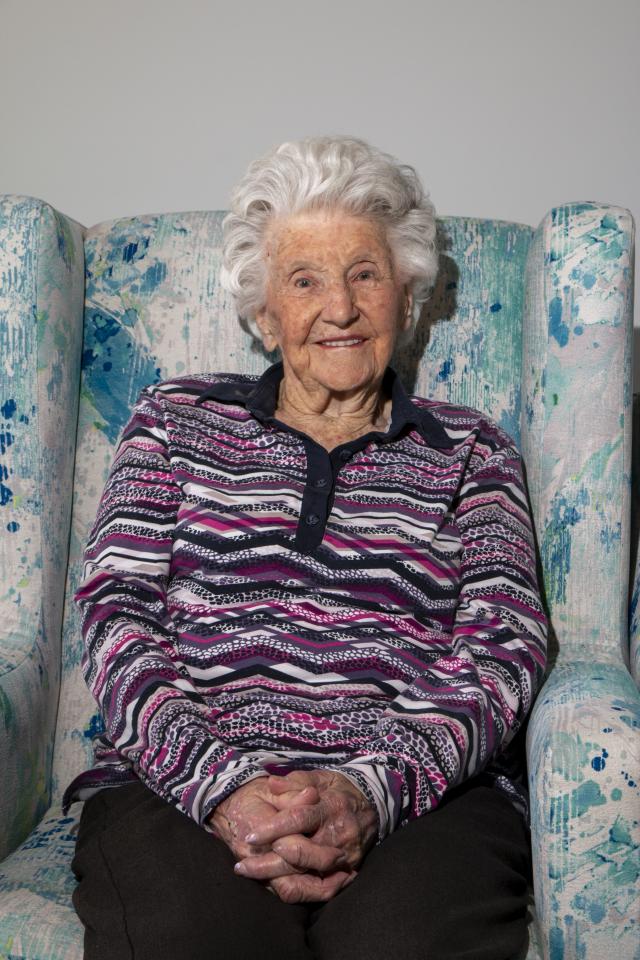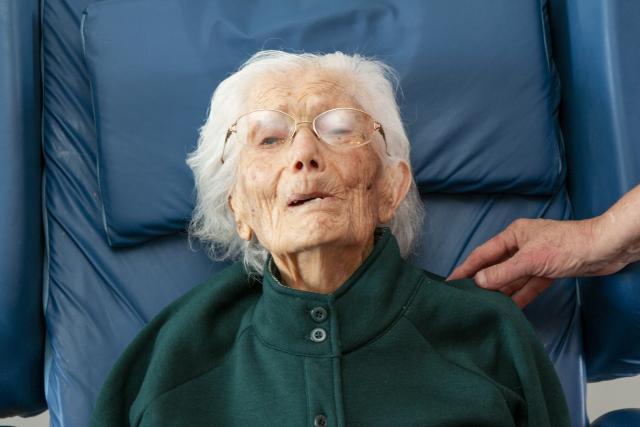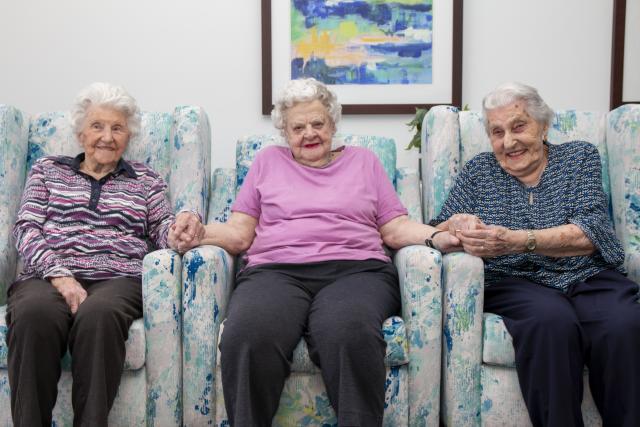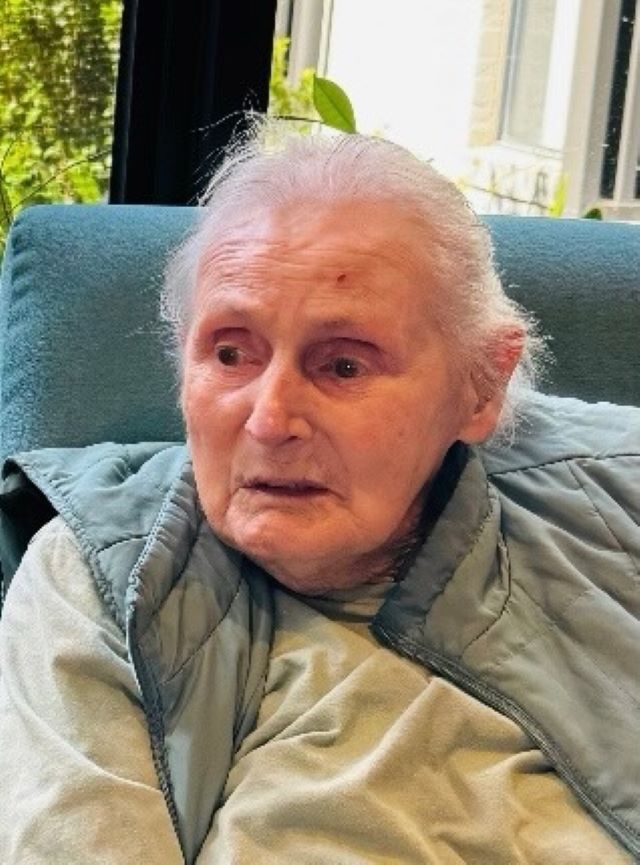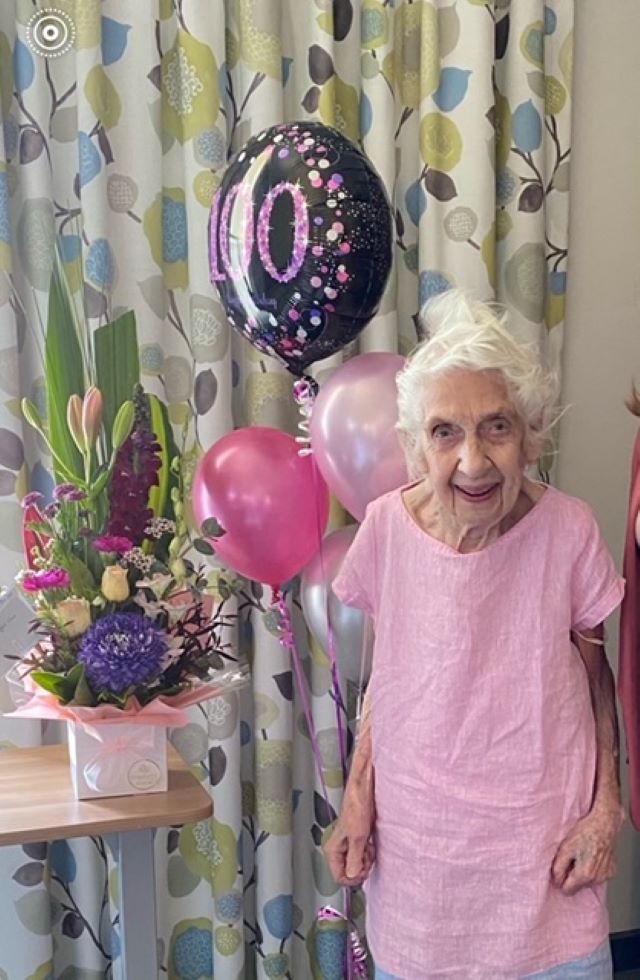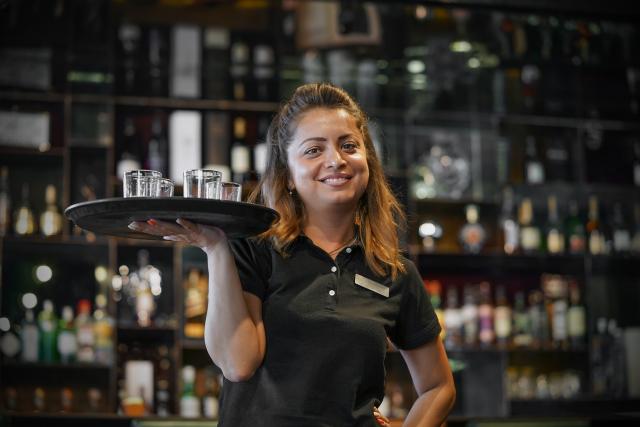As Australia’s population ages and medical advances continue, the chances of living to or past 100 are also increasing. But what are the chances of six centenarians living together in the one aged care home? Cade Lucas visited St Vincent’s Aged Care in Werribee to find out.
In terms of statements of the obvious, pointing out that aged care homes are full of old people ranks alongside revelations that water really is wet, bears actually do defecate in the woods and the Pope is very much a Catholic.
However, it turns out that while aged care residents are indeed old, they’re not always that old.
According to Debbie Ferreira, lifestyle coordinator at St Vincent’s Aged Care in Werribee, not many residents live to be 100.
“It’s not common,” said Mr Ferreira who has worked at St Vincent’s for three years and in the aged care industry for more than 20.
“On average, just one or two people in the facility will be that age, if you’re lucky.”
If that’s true, then Ms Ferrieira and her colleagues better go buy lottery tickets because they currently have not one or two centenarians living there, but three times that amount.
“It’s amazing to have six in the same building.”
“It’s very very rare. We’ve got 80 residents and out of the 80, we’ve got six centenarians. Fantastic.”
So rare and so fantastic that Star Weekly was recently invited out to St Vincent’s Werribee to meet and interview members of its 100 club.
All six were born between 1922 and 1924 so turned 100 within the last two years and along with similar ages, share one other major characteristic in common: they’re all women.
“Women live longer” remarked a staff member matter-of-factly when Star Weekly pointed this out.
Unfortunately, one thing they don’t have in common is a willingness or ability to talk or pose for photos.
On the way to the lounge where I was to conduct the interviews, I was told that the oldest of the lot, 101 year old Moira Bowtell, wasn’t available. She wasn’t sick or asleep, just not interested apparently. Oh well. When you’re going on 102, you can do what you like I suppose.
I’m then informed that Bendigo born Dorothy Martin was in hospital. This was a shame as it was also her 101st birthday, but was even more disappointing after reading her bio and noticing that among her hobbies and interests was disco dancing. Me and Dorothy would have to trip the light fantastic another time.
Once in the lounge the first resident I saw was another who clearly wouldn’t be participating.
Hungarian born Maria Szlobpda was propped up on a large bed/recliner, awake but nothing more. Staff told me that the 101 year old is now non-verbal. Maria and husband Steve moved to Australia in 1956 and embarked on a life typical of post-war European migrants. Maria worked for a textile company while Steve was a mechanic. They lived in Altona North and were active members of the local Hungarian community. After caring for Steve in his final years, Maria’s own health declined following his death and she moved into St Vincent’s soon after its opening in 2017.
Like Maria, Marcella Stangherlin was also a post-war migrant, arriving from Italy with her two brothers in 1949. However, Marcella not only retains the ability to speak, but is only too happy to do so, filling the room with her heavily accented voice, adding sound effects and gesticulations for good measure. Having only turned 100 in January she’s the second youngest of the group and her loud boisterous nature suggests as much. Marcella regaled me with tales of her son Gus and late husband Angelo, who she met after arriving in Australia and with whom she ran a vegetable farm at Werribee South.
What did they grow I asked?
“Lettuce, cauliflower, sugar beet…..(long pause)…..that’s all,” she laughed.
Later on they added a poultry farm, something Marcella doesn’t recall so fondly.
“Mama Mia” she exclaimed while waving her hand in front of her nose.
When I asked about the reason she left Italy for Australia, World War II, Marcella was equally animated.
“Oh my god, every night, nine o’clock, 11 o’clock, 12 o’clock, aeroplane, brroooooommmm” she recalled making the noise of Allied aircraft racing through the night sky.
“Bomba, boom, boom, boom, boom,” she continued with hand gestures of added effect.
While Marcella came to Australia to escape the war, Lydia Rintoull was living here during it and still remembers the moment it came to an end.
“Everything stopped at work,” recalled the 100 year old who was making stockings at the Holeproof factory on the afternoon in 1945 when news came through that the greatest conflict in human history was over.
“Everybody went into Melbourne and danced in the street outside the post office in Bourke Street. We stayed there till dark.”
It was a joyous moment in an otherwise joyless time for Lydia who moved to Melbourne from Yea when she was 16 and never warmed to city life.
“I hated it. I found it busy after living in a country town.”
Fortunately she didn’t stay long. After meeting Ron Rintoull on a trip back home for Christmas, they married and returned to the country to become farmers, first near Yea and then in Melton, where they lived until Ron’s passing shortly after their 70th wedding anniversary. Along the way they had four children, though tragically two of their three boys died young, leaving just a daughter and their eldest son who today lives in nearby Hoppers Crossing. As well as raising children of the farm, Lydia raised dogs too, breeding dachshunds and seeing eye dogs, while her love of canines extended to supporting the Western Bulldogs. Lydia was one of the first residents to move into St Vincent’s when it opened more than five years ago and while enjoying the company, offered a blunt answer when asked if she’d like to hang around for a while longer.
“Oh I hope not,” she laughed.
Like Lydia, Joyce Soulsby also seemed rather non-plussed about the future.
Born in the Victoria goldfields town of Dunolly in May 1924, Joyce is technically not even a centenarian yet and didn’t seem aware she was about to become one.
“May next year,” she nominated when asked when the big day was before Debbie Ferreira reminds her, “this year, May this year.”
So was she excited about her 100th birthday being just three months away?
“Not really no,” Joyce deadpanned with the nasal drawl and tinder dry humour of someone who’s lived most of their life on the land.
“What about getting a letter from the King, you know Prince Charles,?” I inquired.
“Oh big thrills,” she chuckled before adding: “I’ll just keep plodding along.”
It would become her stock answer to nearly all my inquiries.
Will she have a party when turns 100?
“I’m not into big parties, I just keep plodding along.”
Did she have any regrets?
“No I just keep plodding along.”
What did she miss about her younger years?”
“It doesn’t worry me I just go on day to day and plod along.”
What advice would she give to younger people?
“Work hard and plod along.”
In between answers Joyce did manage to fill out her life story. She and late husband Jack ran a sheep farm and raised five children, the youngest of whom, Glen, lives in Werribee and visits for lunch every Wednesday.
“Glen, oh he’s a card. Everyone knows him around here,” Joyce said, adding “he’s slightly handicapped, but he gets around. He’s good.”
Joyce enjoyed gardening and playing golf and bowls in her younger years, but after moving to St Vincent’s aged 97, she is now just happy to go outside in the fresh air.
To just plod along.


